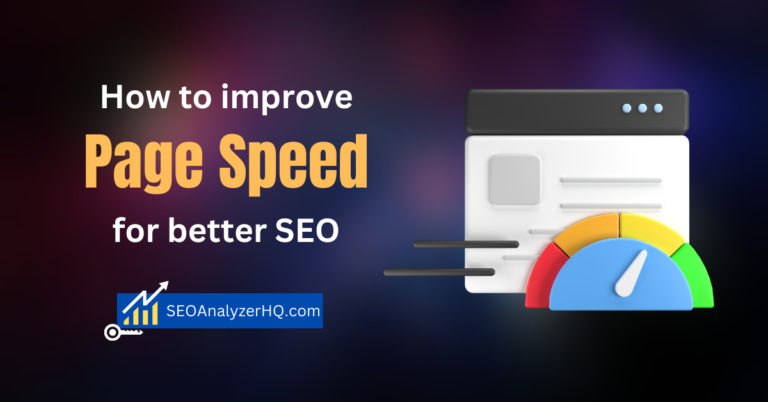Understanding Mobile-Friendliness in Technical SEO

Did you know over 60% of all internet traffic comes from mobile devices? As mobile usage continues to grow, optimizing your website for mobile users is no longer optional—it’s essential. With Google’s mobile-first indexing, websites that aren’t mobile-friendly risk being outranked by competitors that deliver better mobile experiences.
In this guide, we’ll walk you through a mobile friendly SEO audit to ensure your site is optimized for mobile performance and ranks higher on search engine result pages (SERPs).
Why Mobile Optimization is Crucial for SEO
Mobile optimization isn’t just about making your website look good on a smartphone—it’s about ensuring a seamless user experience. With Google now using mobile-first indexing, the mobile version of your site gets indexed and ranked, even for desktop searches. This means that if your mobile experience is poor, your rankings could suffer across the board.
Plus, with more users browsing, shopping, and engaging on mobile devices, a mobile-friendly site directly impacts your user engagement, conversions, and ultimately, revenue.
Setting Up Tools for a Mobile Friendly SEO Audit
To start your mobile-friendly SEO audit, you’ll need a few essential tools that provide insights into your site’s mobile performance:
- Google PageSpeed Insights: This tool helps you analyze how fast your site loads on mobile devices and provides recommendations for improvement.
- Google’s Mobile-Friendly Test: A simple tool that shows whether your site is mobile-friendly according to Google’s standards.
- Google Search Console: The Mobile Usability report in Search Console identifies specific issues affecting your mobile experience, such as clickable elements being too close together.
These tools will help you get a clear picture of where your site stands and what needs improvement.
Testing Your Website’s Mobile Responsiveness
When was the last time you tested your website’s design across different screen sizes? A responsive website automatically adjusts its layout to provide an optimal experience for mobile users. Websites that aren’t responsive force visitors to zoom, scroll horizontally, or face a distorted view—an instant recipe for high bounce rates.
Here’s how you can ensure your website is fully responsive:
- Use Google’s Mobile Friendly Test: This tool instantly tells you whether your site is mobile-friendly and offers suggestions on how to fix issues.
- Manually check your site on various devices: Visit your website from smartphones, tablets, and desktops to ensure a consistent experience across the board.
- Responsive design frameworks: If you’re designing from scratch, frameworks like Bootstrap help create fully responsive websites.
Optimizing Page Speed for Mobile Users
Page speed plays a massive role in both user experience and SEO, especially on mobile. If your site takes less time to load, users are more likely to bounce. Google also considers page speed to be a ranking factor so that a slow mobile site can hurt your search rankings.
Here are some ways to improve your mobile page speed:
- Compress images: Large, uncompressed images are one of the biggest culprits for slow loading times. Tools like TinyPNG or ShortPixel can help reduce image sizes without sacrificing quality.
- Use lazy loading: This technique delays the loading of non-critical resources (like images) until they’re needed, improving the initial load time.
- Minify CSS, HTML, and JavaScript: Remove unnecessary characters from code to improve load times without affecting functionality.
I remember auditing a site that had a 10MB homepage because of uncompressed images—after optimizing the images and minifying code, the page load time dropped from 12 seconds to just 2 seconds!
Enhancing Mobile User Experience (UX)
A mobile-friendly site isn’t just about speed—it’s about delivering an intuitive, easy-to-navigate experience. Here are some key areas to focus on for improving mobile UX:
- Touch-friendly navigation: Ensure buttons and links are large enough for users to tap easily with their fingers. Avoid cramming clickable elements too close together.
- Clear call-to-actions (CTAs): Make sure your CTAs stand out and are easy to interact with on smaller screens.
- Readable fonts: Small fonts can make reading difficult on mobile. Stick to a minimum of 16px for body text and larger sizes for headings.
- Simple menus: Avoid complex, multi-level navigation. Instead, go for a collapsible, hamburger-style menu that works well on mobile.
Improving UX can not only boost SEO but also lead to higher engagement and conversions.
Mobile Content Optimization
Optimizing content for mobile is different from optimizing content for desktop. On mobile, users typically prefer shorter, to-the-point content that’s easy to digest. Here’s how to structure your content for mobile users:
- Short paragraphs: Keep paragraphs concise (2-3 sentences) to make content more readable.
- Legible font sizes: Ensure text is large enough to be read easily without zooming.
- Mobile-friendly images and videos: Make sure multimedia elements load quickly and scale properly on different devices.
Remember, mobile users are often multitasking, or on the go, so clarity and simplicity are key.
Monitoring Mobile Performance with Google Search Console
After making these improvements, head over to Google Search Console to monitor how well your site is performing on mobile. The Mobile Usability report will highlight any issues that need attention, such as:
- Clickable elements are too close together.
- The content is wider than the screen.
- The text is too small to read.
Fix these errors and re-run your audit periodically to ensure everything is in top shape.
Wrapping Up Your Mobile-Friendly SEO Audit
Now that you’ve completed your mobile-friendly SEO audit review your results and make any necessary adjustments. Keep an eye on your mobile performance metrics in Google Search Console to track improvements over time.
A well-optimized mobile site will not only improve your SEO but also provide a better experience for your users, increasing your chances of higher engagement and conversions.
Frequently Asked questions (FAQs)
How can I check if my website is mobile-friendly?
Use Google’s Mobile-Friendly Test tool. It provides an instant analysis of your website’s mobile usability.
What is Google’s mobile-first indexing?
Mobile-first indexing means Google predominantly uses the mobile version of your site for ranking and indexing. If your site isn’t mobile-optimized, it could affect your rankings.
Why does page speed matter for mobile SEO?
Mobile users expect quick load times. A slow site can lead to higher bounce rates and negatively impact your rankings on mobile search results.
How do I improve my mobile page speed?
Compress images, use lazy loading for content, and minify your CSS, HTML, and JavaScript to reduce load times.
What are the key mobile usability issues to avoid?
Avoid small touch targets, unplayable content, slow-loading pages, and improper viewport configuration that doesn’t scale properly on mobile devices.





